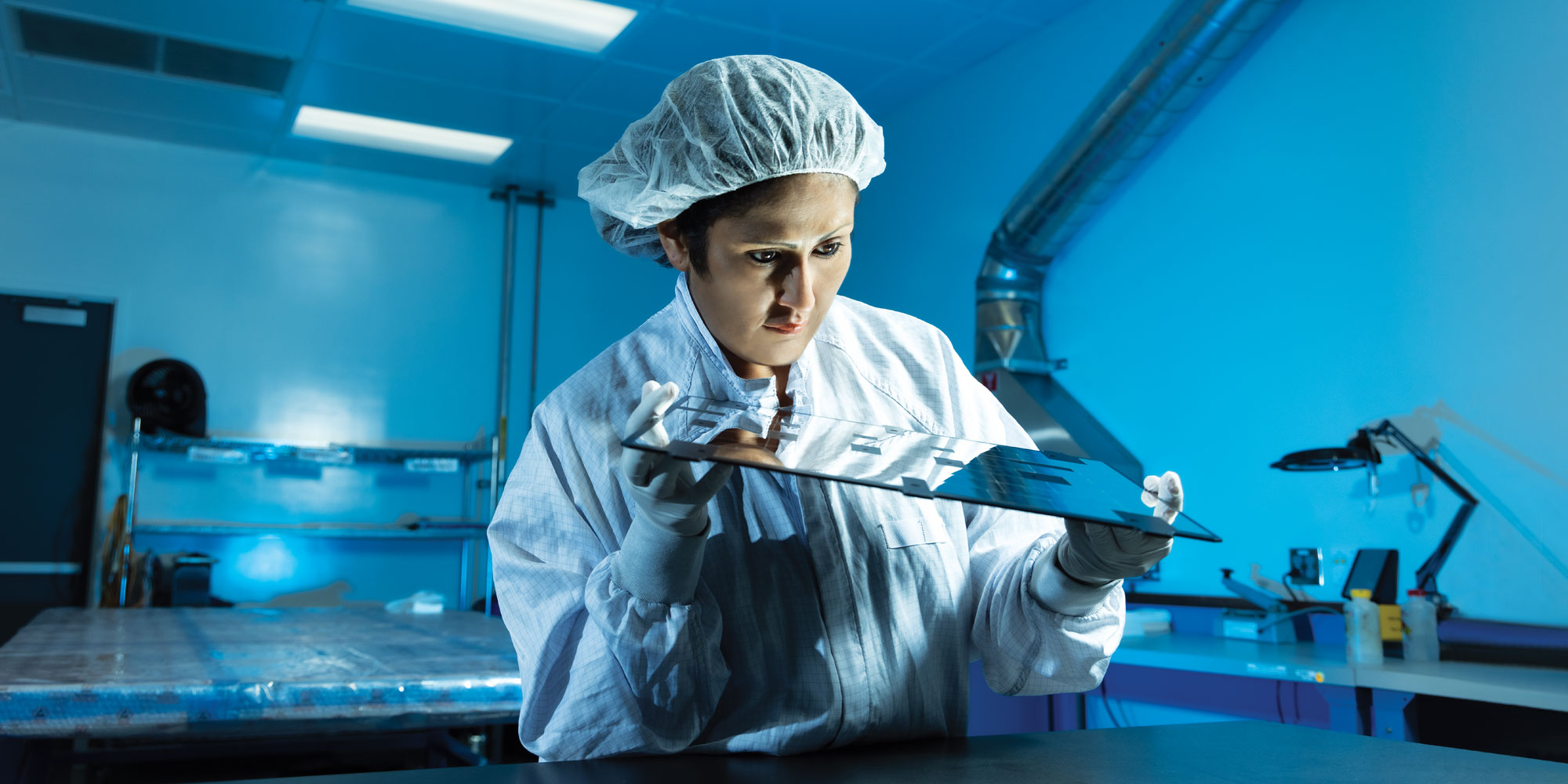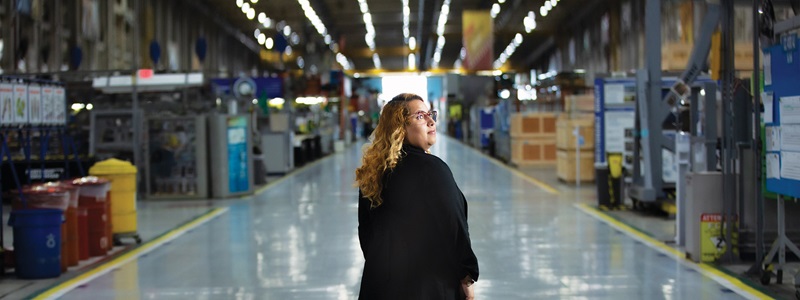Anahi Solis started her journey at Northrop Grumman right out of high school in 2011.
Through the Looking Glass
The Woman Who Helped Craft Webb's Window to the Cosmos

By Lauren Mittleman
Rosibel Diaz grew up loving puzzles, but never imagined those planning and problem-solving skills would lead her to bonding mirrors on the James Webb Space Telescope (Webb).
“I’ve always been a hands-on kind of person. I find joy and pleasure in building things with my hands and putting things together,” said Rosibel who, after graduating from technical school with a focus on electrical work, joined Northrop Grumman.
For more than a decade, Rosibel has put her passion to work bonding mirrors to various spacecraft panels, including those covering the equipment panels of Webb, a project that took Rosibel and several colleagues about five years to complete.
Mirrored Marvels
Mirror bonding is the process of using silicone rubber or dissipative silicone adhesive to attach thermal control mirrors to the sides of spacecraft panels facing outer space. These panels house and protect the spacecraft’s delicate instrumentation which enables the mission. The mirrors help regulate the extreme temperatures spacecraft experience while on orbit. On Webb for example, small, super-thin mirrors were bonded onto the equipment panels to act as thermal blankets to maintain cool temperatures inside the spacecraft, preventing any equipment damage.
“The work I do is pretty meticulous,” Rosibel said. “The mirrors are paper thin and very delicate. It’s almost like laying tile, but on a much smaller and more fragile scale.”
This mission-critical process is time consuming and sensitive. A single spacecraft might feature dozens or thousands of panels. As a result, Rosibel's work on a spacecraft can span from a few days to, as on Webb, years. After bonding the mirrors to a panel, the panel can take between 48 hours to a week to fully cure, depending on the panel's size and material. Curing is a process in which an adhesive, silicone, epoxy or coating reaches maximum strength and effectiveness.
“I take pride in what I do,” Rosibel said. “I know it’s important to the mission. Also, the mirrors are like eye candy to a satellite because it looks pretty when it’s done. It’s all clean, shiny and bright — eye-catching.”
This is especially true when her work is showcased worldwide, like it was during Webb’s launch in December 2021.
“When I saw what would be the last view we’d ever see of Webb in space, the eight mirrored panels, I was almost in tears — that’s my work out there,” Rosibel said. “I mean, what are the chances of doing something like that in your lifetime? It’s pretty amazing.”
A Long-Lasting Legacy
When Rosibel started in 1989, few women worked in technical jobs like hers, but over the decades, she said she’s seen much more diversity in the industry — she’s even worked on teams of all women, a stark contrast to times in her early career when she had been the only woman in the room.
Rosibel said she has often benefited from the guidance of more experienced teammates, mentorship that she pays forward to her early-career colleagues and apprentices. Most of the apprentices come from colleges and trade schools, with a few from high schools, from the South Bay region of Southern California. They come to Northrop Grumman’s Space Park in groups of three or five and rotate to experience different manufacturing roles, working with more experienced technicians for hands-on, online and classroom training.
“Mirror bonding is not something that you can just pick up easily,” Rosibel said. “It’s kind of intimidating to work with the mirrors; you don’t want to break them when you’re installing them and they’re so fragile.”
The training Rosibel gives these apprentices is very interactive, she said. For example, she teaches her process of sectioning out mirrors, putting them together like a puzzle and bonding them to their assigned spot on a flat or curved surface.
Her advice to the next generation: Never say never.
“Especially women, don’t be afraid. Don’t be afraid to speak up for what you want in life and what you want, period,” Rosibel said. “I love what I do. I’ve worked with wonderful people who supported me and taught me so much. Now, I’m the one who gets to teach the next group.”
Life at Northrop Grumman
Your work at Northrop Grumman makes a difference. Whether you want to design next-generation aircraft, harness digital technologies or build spacecraft that will return humanity to the moon, you’ll contribute to technology that’s transforming the world. Check out our career opportunities to see how you can help define possible.


